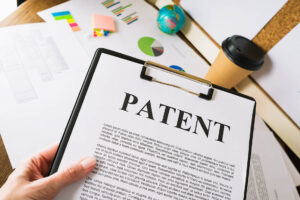The Neem tree, commonly referred to as the “free tree” in other countries, is prevalent in the villages of Tamil Nadu. Historically, it could also be found on every street in the city, but many were cut down to make way for roads. In Indian culture, however, the Neem tree holds a unique and significant place. Many households used to have one, a fact known by those who visit their ancestral homes during holidays. And in this article we will see about the Neem Tree Patenting Issue.
The Neem Tree Patenting Issue:
The tree has long been utilized for its herbal properties and is integral to rural livelihoods. In 1995, the European Patent Office (EPO) granted a patent for the Neem tree to the U.S. Department of Agriculture and Multinational W.R. Grace, sparking widespread anger among Indians in the subcontinent. This was not just a small patent issue but a seminal moment in raising awareness about patent issues.
To provide more information about this case, you should know about the man who stood up for this issue once he heard it – G. Nammalvar. He was a dedicated farmer and agricultural scientist who understood the science of nature better than anyone else.
He educated many people in the Thanjavur and Tirunelveli districts on the methods of the plantation, wrote books, and appeared on T.V. shows to educate people on heritage methods that were most effective for agriculture and Ayurveda. Therefore, when he heard about the patenting of the neem tree, he immediately called out and filed a petition against the patent.
The United States claimed they were making fungicides from the neem tree, but Nammalvar, a rural farmer from India, argued that rural people in India had been doing the same for more than 2000 years. He also questioned how the European Patent Office (EPO) could offer a patent for a tree to a country that only cultivated artificially developed seeds.
Nammalvar even claimed that the soil in the United States was completely unsuitable for the plantation of neem and that even if they were to cultivate it, they would have to do so in India. The petition continued for a few years until the end of 2000, when the EPO invited representatives of India to Munich, Germany. Nammalvar was accompanied by Vandana Shiva of the India-based Research Foundation for Science, Technology, and Ecology, former Belgian health minister Magda Alevoet, and a few others.
They all gathered outside the EPO Head office in Munich. Just an officer and a lawyer came out, and they were shocked to see them holding parts of the neem tree in their hands. The officer asked the first person, “What is this?” The person replied, “This is a neem leaf. You run to a hospital when you get the pox, but we run to our backyard and sleep under the neem tree. That’s it.” The officer said, “I see, I see,” and walked to the next person.
He asked, “What is this?” The second person replied, “This is a neem seed. Heating this in mild flame and smelling the aroma cures viral infections and headaches.” Again, the officer said, “I see, I see,” and walked to the next person. He asked, “What is this?” The third person replied, “This is called a neem cake. It has been used by our people for more than centuries as insecticides for crops. Exactly what W.R. Grace (a U.S. company that has the neem patents) is trying to make now.” He replied boldly.
The officer moves to the next person and says, “I see, I see.” He then asks, “What is this?” The person responds, “The neem skin or outer surface which can be used as a toothpick.” The officer again says, “I see, I see,” as he moves to the last person, Nammalvar.
Nammalvar smiles as the officer approaches and asks, “What is this?” Nammalvar responds, “This is my toothbrush.” The officer asks in a puzzled tone, “Toothbrush?” Nammalvar explains, “Yes, this is my toothbrush. Do you know the specialty of this? You usually need a brush and a paste to brush, but my toothbrush has its paste inside. See, it’s two in one,” and shows it to the officer.
The officer again says, “I see, I see.” Nammalvar looks at him and says, “It has another advantage. Look,” as he drops the stem. He continues, “If you drop your toothbrush or toothpaste, nothing happens, but when I drop my brush, a new tree will be born in the same place.” The officer asks in surprise, “Really, a new tree can be formed here?”. Nammalvar replies confidently, “In our soil, it takes only a few years, but in your soil, probably never.”
The officer looked at him with an insulting poker face and walked away without saying, “I see.” On the next hearing, India availed the patent rights for the neem tree from W.R. Grace. India secured a landmark victory, opening many people’s eyes to traditional patenting. Like the evolution theory, which states that if you stay in a land long enough, it becomes your land. The tradition you follow for long enough may be considered yours.
Did you know that the string theory was developed by a manifold of the K3-SURFACE written by our own Srinivasa Ramanujan? If half of G.D. Naidu’s inventions had been patented, many of his discoveries would have been credited, and his grandsons could have been millionaires. However, patenting them will make them legally yours as well.
In the Neem tree patenting issue after we win, India took notice and decided to patent as many traditional patents as possible. They immediately spread awareness, and by 2004, the Indian Patent and Trademark Office had received and approved over a hundred patent applications. In Tamil Nadu, many districts with famous elements registered their patents, such as Madurai Jasmine, Thanjavur Dolls, and Kanchipuram Silk.
Tamil Nadu had 24 patents, making it the state with the second-most patents in 2004, behind Karnataka. The top 5 states with the most patents in 2004 were:
- Karnataka, with 32 patents
- Tamil Nadu, with 24 patents
- Kerala, with 21 patents
- Orissa, with 15 patents
- Andhra Pradesh (Telangana) with 11 patents.
Conclusion:
The list for the year 2004 showed that, by 2016, the number of patents granted in India stood at 9,847. According to data submitted to the Rajya Sabha (the upper house of parliament) in 2017, the number had risen to 13,045. Currently, the number has surpassed 14,000 and continues to rise. People have come to understand the importance of patenting and are regularly applying for it to protect their inventions. To conclude, patenting your million-dollar invention may make you a millionaire and your grandson a billionaire. This is the best quote you’ll ever hear.







